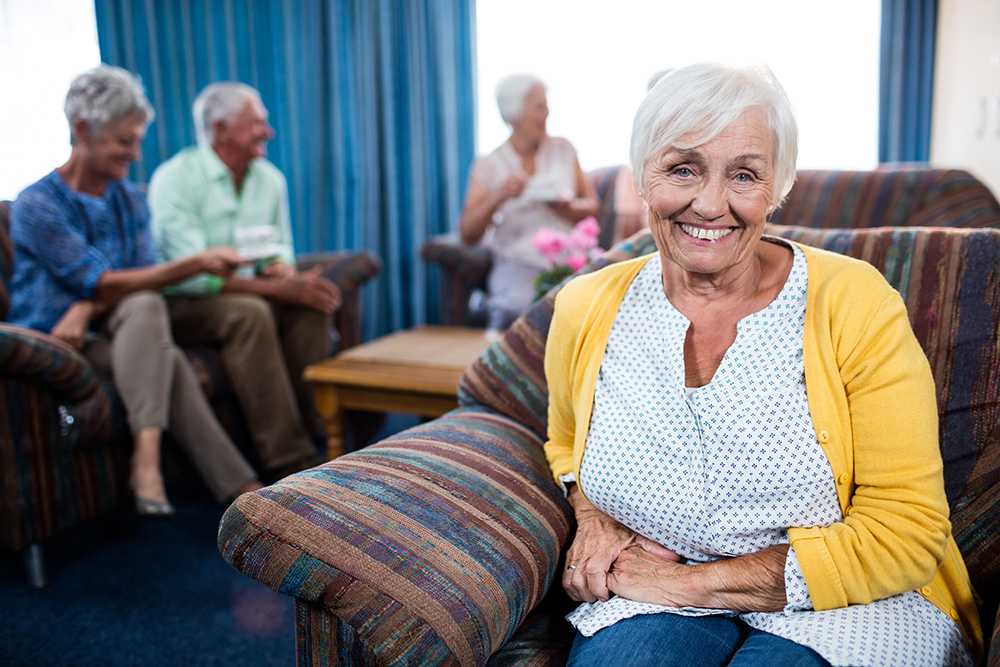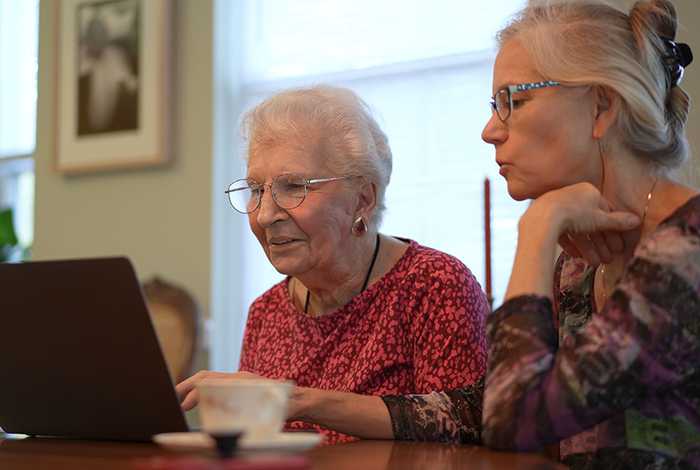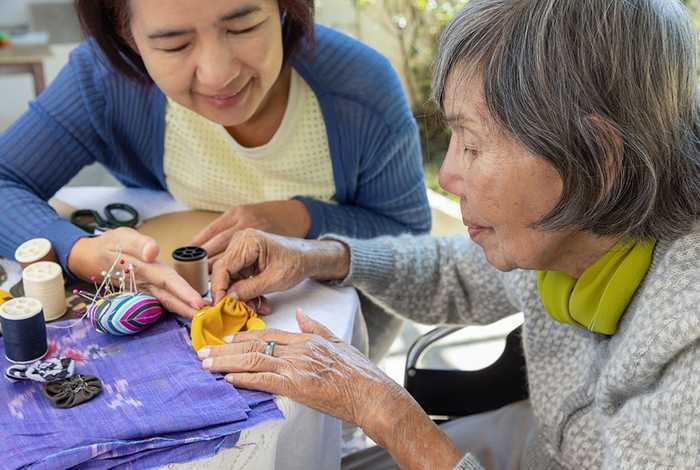Posted by Janine Griffiths
What is sheltered housing?

Reaching a certain stage in life doesn’t mean letting go of freedom.
In fact, for many older adults, it’s quite the opposite. The idea of moving somewhere new isn’t about giving up independence, it’s about reshaping it to better suit your needs, comfort, and peace of mind. The home you live in should support the life you want to lead, not hold you back from it.
Still, deciding what kind of housing is right for you can feel like wandering through a maze. Sheltered housing, retirement communities, extra care, care homes… the terms can blur into one another, and often, the differences aren’t immediately clear. It’s easy to feel overwhelmed when all you want is to feel safe, supported, and still very much in control of your own life.
That’s where this blog comes in. We discuss the pros and cons of sheltered housing which is one of the most popular accommodation options for those that have reached retirement age. But what is sheltered housing exactly? Who is it for and what are the benefits? In this blog, we answer all of those questions and more.
When it comes to planning for the future, knowledge isn’t just power - it’s peace of mind. Exploring your options now is one of the kindest things you can do for yourself.
Definition of sheltered housing
But what is sheltered housing exactly? Before we deep dive into whom it may be suited for, it is first important to have a clear definition of the term.
Sheltered housing is a type of accommodation created specifically for older adults who want to remain independent but would feel more comfortable with a little added support.
Sheltered housing typically includes an onsite housing manager or warden, building and equipment maintenance, fulfilling wishes and often organising activities, much like that of an activity coordinator. These are the thoughtful touches that help you feel secure, like knowing help is there if you need it, or having friendly neighbours close by who understand what it’s like to be at this stage of life. Sheltered housing often also includes an emergency call system that connects you to help around the clock, should anything unexpected happen.
Communal areas like lounges and gardens are often part of the setup too, offering the chance to connect with others if and when you choose. There’s no pressure to socialise, but it’s comforting to know the option’s there, especially if you’ve found that living alone can sometimes feel isolating. Essentially, it serves as a thoughtful balance: a home that offers you independence but never leaves you feeling alone. It’s not about giving up your way of life, it’s about protecting it, with just enough support to help you enjoy it more confidently.
Key features of sheltered housing
Once you get past the formal name, the real heart of sheltered housing is in the details - the little things that make life easier, more secure, and often more enjoyable too. If you’ve found yourself asking: ‘what is sheltered housing?’, one of the best ways to answer that is by looking closely at the features that set it apart.
To start with, you have your own front door. That means privacy, freedom, and independence are fully intact. You’re not sharing living space or adjusting to someone else’s routine. Sheltered housing typically offers self-contained flats or bungalows, so you can cook your own meals, come and go as you please, and decorate however you like.
What sets it apart, though, is the added layer of reassurance. Most sheltered housing schemes are fitted with a 24-hour emergency alarm system, so help is always close at hand, even during the quiet hours. Many also have a scheme manager or warden on-site or nearby, someone who can check in if needed and keep things running smoothly in the background.
The communal areas are there if and when you fancy some company. Think shared lounges or garden spaces where neighbours can have a natter, read the paper, or just enjoy the day. Some places may even offer occasional social events or group activities, entirely optional, of course. The atmosphere is gentle and unforced. You’ll never be expected to join in if you’d rather have your own quiet time.
Another bonus? Low-maintenance living. Repairs and garden upkeep are typically handled by the scheme, so you don’t need to worry about mowing lawns or fixing dripping taps. It’s one of those quiet reliefs that can make a big difference, especially if things like home maintenance have become more of a hassle over time.
Everything is also designed with accessibility in mind such as, wide doorways, level access, and features that consider both comfort and safety as you get older. It’s the kind of thoughtful design that lets you get on with life without constantly adjusting to a space that no longer fits your needs.
So, 'what is sheltered housing?' It’s a home that gives you space when you want it, support when you need it, and a sense of community that’s always there - but never pushed. A little structure, a lot of freedom, and plenty of peace of mind.
What does sheltered housing cost?
Thinking about a move, especially one that’s meant to offer more peace of mind, naturally brings up questions about cost. And rightly so. Whether you're planning ahead or starting to explore options more seriously, it's helpful to know what kind of financial commitment sheltered housing might involve and what you’re actually getting for your money.
Typically, you’ll pay rent and a regular service charge when moving into sheltered housing. In some cases, shared ownership or buying outright might be available too, though that depends on the provider and location. The service charge usually covers things like building maintenance, communal areas, and the on-call emergency system - those behind-the-scenes essentials that keep everything ticking along. Many also provide meals.
It’s also worth knowing that financial support might be available. Depending on your income and circumstances, you could qualify for Housing Benefit or help from your local council. It’s always worth looking into - what feels out of reach at first glance may become much more realistic with the right advice and information.
As with any move, there are practical things to ask before making a decision. Can you bring a beloved pet? Are visitors welcome to stay overnight? What exactly is included in that service charge, and will it change over time? These kinds of questions might seem small, but they matter - they’re about your lifestyle, your comfort, and your sense of home.
If you’re not quite sure where to start, Autumna’s directory can help you compare sheltered housing providers quickly and easily. You can filter by location, costs, pet policies, available support, and more. It’s a simple way to narrow things down and make confident choices, all in your own time. Our platform also tells you what is and is not included in the service charges.
After all, choosing somewhere to live isn’t just about what you need today. It’s about making sure it will still feel right tomorrow.
Is sheltered housing the right fit for you?
Deciding where and how to live as you grow older isn’t always a straightforward process. It’s personal. Emotional, even. And sometimes, it’s as much about the things you don’t want - loneliness, uncertainty, upkeep - as it is about the things you do want: ease, comfort, and a sense of feeling safe and understood.
So how do you know if sheltered housing might suit you?
One helpful place to start is by reflecting on your current routines. Does your home still serve you well? Is it starting to feel too big, too quiet, or simply too much to manage? Downsizing can be a surprisingly liberating step, especially if it brings more convenience without sacrificing independence.
Then there’s the emotional side. Do you feel connected to where you are now, or do some days feel a bit too quiet? Would knowing someone is close by - just in case - bring you a sense of ease? Could you see yourself enjoying the comfort of community, while still living life on your own terms? Sheltered housing is designed with exactly those thoughts in mind. It offers a practical setup, yes, but it’s also about emotional reassurance and the quiet comfort of community.
When people ask what is 'sheltered housing?', they’re often trying to picture what life there might feel like. And the truth is, it isn’t about giving up your way of life. It’s about enhancing it. It’s about living somewhere that’s easier to manage, but still entirely your own. Somewhere you can be private when you want to be, social when it suits you, and never far from a helping hand if one’s ever needed.
So maybe the better question is this: what would bring you more peace of mind? If the answer includes simplicity, security, and a gentler pace of life, then sheltered housing might just be worth a closer look.
Planning with peace of mind
When it comes to planning where and how you want to live, it’s natural to want something that feels just right - not too much, not too little, but that reassuring middle ground where you can still enjoy your independence, with just enough support to make life easier.
Sheltered housing is exactly that. It’s a safe, low-maintenance way to keep living life on your own terms, with the added benefit of community, security, and a helping hand nearby if ever needed. If you’ve ever asked ‘what is sheltered housing?’, the answer is simple: it’s a home that supports your freedom, not one that takes it away.
If you’re curious to explore what’s available near you, Autumna’s free directory makes it easy to search and filter by location, facilities, and care options.
Simply visit our website and select retirement living from the boxes above the search bar. Type in your location and press enter. From there you can select Living Type, Housing, Support, Price or Additional Filters to choose the type of housing, and features you need.
Alternatively, our shortlisting tool can help you to get an even more personalised list of recommended properties, based on your requirements. By answering a few quick questions, you can be matched with a list of providers uniquely tailored to you.
Prefer to speak to someone directly? Our friendly advice line is open 7 days a week to help you make sense of the options and talk things through. You don’t need to make decisions today, but it’s always a good time to understand what’s possible. Call us on 01892 335 330.
Receive a Free Sheltered Housing Shortlist!
Let our expert team of advisers get your search off to a great start.
Tell us a little about your needs and we'll send you a bespoke shortlist of sheltered housing properties! Click the button below to begin, it takes just a few minutes.
Other articles to read
From the blog

Older Persons Care Advice
Ultimate guide to jointly owned property and care home fees
September 26th, 2025
Understand jointly owned property and care home fees, how assessments work, and steps to protect your finances and plan ahead with confidence.

Older Persons Care Advice
What are the pros and cons of care homes?
September 26th, 2025
Weigh the pros and cons of care homes to make the right choice for you or a loved one. Discover benefits, challenges, and tips for finding the best fit.

Older Persons Care Advice
Person centred care and dementia: A guide for families
September 23rd, 2025
Discover how person centred care and dementia support go hand in hand. Learn practical tips, expert insight, and guidance for families seeking the best care.
Frequently Asked Questions
Sheltered housing is self-contained accommodation for older adults who want to stay independent with added support, safety features, and a sense of community.
Sheltered housing offers private living spaces with optional support. Unlike care homes, personal care isn’t included as standard.
Not at all. Communal spaces and activities are available if you choose to join, but there’s no pressure to participate.
Depending on your income, you may be eligible for Housing Benefit or council support. It’s worth checking what you might qualify for.






